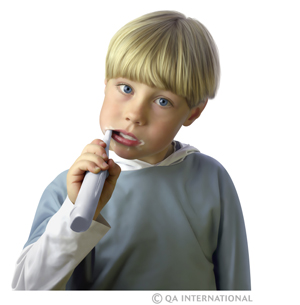Hygiene and the prevention of infections
Certain changes in lifestyle—such as increase in international exposure, the development of public transportation services, and day care centers, as well as the increased use of antibiotics—facilitate and accelerate the dissemination of infectious agents. Given the increased risk of infection, basic hygiene measures remain the most effective way to prevent infections.
Physical Hygiene
By avoiding the proliferation of pathogenic agents (bacteria, viruses, fungi, parasites) on the surface of the skin and mucous membranes, physical hygiene contributes to keeping us free of infection. Good hygiene consists in simple gestures such as:
- Washing your hands after having touched an animal or dirty object, after having used the bathroom, before touching food, before eating, and before touching a person at risk of infection (newborns, the elderly, or immunodeficient individuals).
- Wash daily (particularly between the fingers and toes, the navel, the underarms, and private parts).
- Wash your hair once a week (or more, if needed).
- Brush your teeth after meals or at least twice a day, and use dental floss at least once a day.
- Change your underwear daily.

Domestic Hygiene
At home, the places where food is handled and stored, as well as humid places, are conducive to the proliferation of bacteria and fungi. Therefore, the kitchen, bathrooms, and toilets require particular cleaning and ventilation. Showers, toilets, plumbing, and doorknobs must be disinfected regularly, as do the sink, refrigerator, countertops, and kitchen trash can. Napkins, linens, and dishcloths must be dried rapidly and cleaned frequently. Bedding and floors must also be washed periodically. The vaccination schedule for domestic animals must be respected. Also, animals must be forbidden access, as much as possible, to bedding, kitchen tables, and countertops, and to food that is not their own. Objects or areas that they come into contact with must be cleaned regularly.
The Fight Against the Spread of Infections
A person who is afflicted with an infectious disease of the respiratory tract, such as a cold, can avoid spreading the infection by coughing or sneezing into a handkerchief or into the crease of the elbow. Blowing the nose and washing the hands as often as possible, as well as postponing visits to weak individuals (e.g. newborns, the elderly, immunodeficient individuals) can also help to minimize the spread of infection. In children, it is best to avoid sharing clothing such as hats and scarves, which are conducive to the transmission of lice and the spread of respiratory infections.
Preventing Gastroenteritis and Food Poisoning
In the developed countries, most of the cases of gastroenteritis and food poisoning happen at home. They are caused when food is insufficiently cooked, by contamination through handling or during production (poor hygiene, washing with contaminated water, etc.), or by the poor storage of food, either stored too long or at an inadequate temperature. Contamination, most often by salmonella and Escherichia coli, more rarely by the bacterium Listeria, primarily affects poultry and meats, and, secondly, fish and seafood. To avoid poisoning by contaminated food, certain rules must be followed:
- Be sure, at the moment of purchase, of the origin of food and check the expiration date.
- When you are buying groceries, buy refrigerated or frozen foods last. Put them away immediately when you return home. Transport them in insulated bags, particularly if it is hot or if the trip is long.
- Wash your hands before handling food and wash fruit and vegetables before consuming them.
- Wash utensils and countertops with soap and water if they have been in contact with raw meat before using them for other foods.
- Place foods that must be kept cold in the correct location in the refrigerator. Separate raw and cooked foods. To let air circulate, do not overfill the refrigerator. Keep the temperature of the refrigerator between 32°F and 39°F (0°C and 4°C).
- Do not refreeze food that has been defrosted.
See also: food and clothing in the Visual Dictionary




